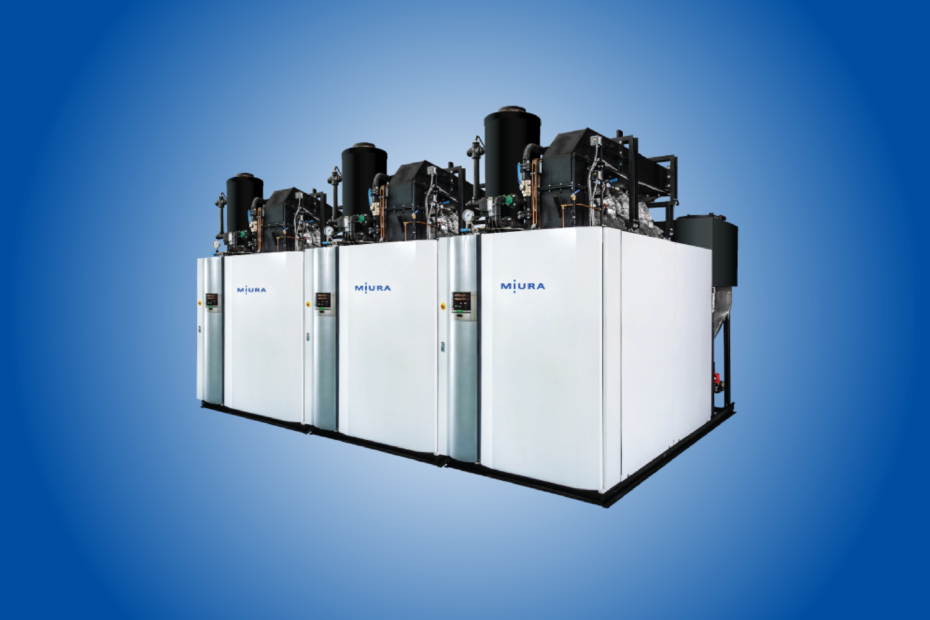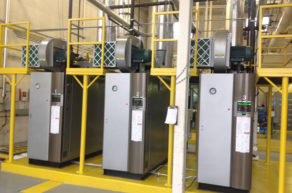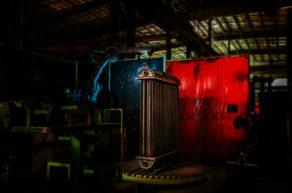How To Find The Most Efficient Industrial Steam Boiler
The merits of efficiency are immense. That’s especially true when it comes to industrial boilers. Considering that many companies, plants, and campuses use their boilers for a variety of purposes (i.e., heating systems, hot water, cleaning, production, etc.), an efficient boiler room can save a multitude of costs over its lifetime. Unfortunately, when many companies test their boiler’s energy efficiency, they find the numbers disturbing, to say the least.
As Miura Rep Brandon Hargett of Greensboro, North Carolina’s Boiler Master Inc., states, “the efficiency of your boilers is going to contribute directly onto what your cost of ownership is going to be over a 25-year life cycle.”
So, how do you measure the efficiency of your steam boiler system? And if you need to replace your system with a new boiler, which industrial boiler is the most energy-efficient? Let’s explore the answers to these questions.
How Steam Boiler Efficiency Is Measured
Steam boilers and hot water boilers are heat exchangers; that is, they use the heat of one fluid (oil or gas) to transfer heat to another fluid (i.e., water). Every heat exchanger experiences some loss of energy during the heat transfer to raise the water temperature. The key to obtaining high efficiency is to make this heat loss as small as possible — or in technical terms, make the BTU heat output as close as possible to the BTU heat input.
There are basically two standards of measuring a steam system’s efficiency: its fuel-to-steam efficiency (also known as Annual Fuel Utilization Efficiency, or AFUE ) and its in-service efficiency (how a boiler system responds in everyday use). The AFUE rating is a measure of combustion efficiency, and most agencies and organizations refer to the AFUE rating when determining the efficiency of a unit or system. Generally speaking, natural gas steam boilers should have a minimum AFUE rating of 80 percent, meaning 80 percent of the energy consumed is converted to steam. (For context, hot water boilers generally have higher AFUE ratings than steam boilers, and condensing boilers typically have high-efficiency ratings, as well. Additionally, residential boilers and domestic hot water heaters will have different rating standards because the demand for these units is not as great. Residential customers will typically use the Energy Star rating to determine whether their hot water system is energy-efficient.)
That said, the AFUE doesn’t tell the whole story because it only measures efficiency when the boiler is running at its maximum capacity. In real life, boiler usage changes based on the shifting demands placed upon it. In-service efficiency measures how a boiler system responds to these changes in demand — how it does what it is being asked to do, whether it’s in high-performance mode, low output, or standby. Thus, taking both of these factors into account gives you a clearer understanding of the overall efficiency of your steam boiler.
Measuring Your Steam Boiler Efficiency
Do you have a high-efficiency boiler, or is your boiler system costing you more money than it should? Typically, the best way to test your boiler’s efficiency is by installing a set of meters to measure each part of the process. There will be a meter measuring steam, a meter tracking the volume of the water moving into the boiler, and a meter on the fuel that’s heating the boiler, whether it’s natural gas, propane, or heating oil. Taking these measurements can help you determine the overall efficiency of any boiler system.
For instance, measuring how many pounds of steam are coming out of a boiler and comparing it to the amount of natural gas needed to produce that steam is a way to calculate the combustion efficiency of the boiler. If you make this calculation on a regular basis and the number begins to change or fluctuate, it means the efficiency of your boiler is changing, most likely in the wrong direction.
Miura LX Series Boilers
You don’t have to look very far to find the most efficient boilers. Miura is famed for developing innovative, ultra-low water content on-demand steam boilers that are short on cost and long on efficiency. Most companies that install a new high-efficiency Miura system report energy savings up to 20 percent or more annually due to lower fuel costs.
“The LX Series boilers are equipped with a high-efficiency rating right off the shelf,” Hargett explains. “When I say ‘off the shelf’ — that’s without adding any additional combustion trim or flue gas recirculation to the unit.”
Efficient Use Of Space
When working with Miura customers, Hargett often likens the LX Series models as the “Cadillac” of the Miura line.
Of course, that’s only in terms of their superior performance — in terms of their size, they are a far cry from the hulking presence of these classic Landshark cars. In fact, the LX boilers have the smallest footprint per horsepower output of any. The compact size takes just 50 percent of the space required by a traditional fire tube boiler, and they don’t need the pull-space that conventional boilers require.
Unparalleled Energy Efficiency
The LX Series Industrial Boilers exceed expectations in both fuel-to-steam efficiency and its in-service efficiency. These units feature a computer-aided design that provides optimal heating surface transfer for an AFUE rating of 85 percent. A fire-tube boiler generally produces up to 83 percent fuel-to-steam efficiencies. It’s important to note that, with actual use, Miura boilers can save your organization 10-40 percent on fuel compared to traditional fire tube boilers.
Low NOx Emissions
Efficiency isn’t just about conserving energy and costs; it’s also about eco-friendliness and reducing the number of harmful emissions. Given recent reports and concerns about global warming, the need for low emission boilers is more critical than ever. With steam boilers, one key emissions standard is the number of harmful nitrogen oxides (NOx) released into the environment. When a gas boiler is considered low NOx or ultra-low NOx, it releases far fewer of these harmful agents into the environment, and you can safely say you have a “green” boiler system. This is why environmentally conscious companies prefer modular water tube boilers, and why you should care about your own boiler’s NOx emissions.
The LX Series is specifically designed to meet or exceed low NOx emissions standards. Hargett adds that the LX Series models are made to meet “stringent low NOx criteria in certain parts of the country, just strictly based upon their pressure vessel design and how their flue gas temperatures and their burner flame temperatures run much cooler because we’re compacting the pressure vessel.” The end result is a boiler system with cleaner exhaust gases that can help your company meet its sustainability goals, and even help with LEED certification.
Get more information about Miura’s LX series boilers
If you’re unsure whether your steam boiler is energy efficient or whether your business needs a low NOx boiler, we are happy to help.
Contact a Miura rep in your area to learn more about our efficient industrial steam boilers.






